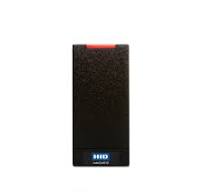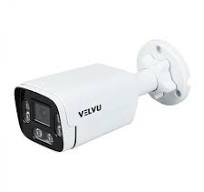In the realm of modern security systems, card access readers play a crucial role in providing controlled access to buildings, facilities, and sensitive areas. These devices have revolutionized the way businesses and organizations manage their security protocols, offering a convenient and efficient method of granting or restricting entry based on an individual’s credentials.
A card access reader typically consists of a card reader unit that is installed at entry points, along with electronic cards or key fobs assigned to authorized personnel. When an individual wishes to gain access to a secured area, they simply present their card or key fob to the reader. The reader then verifies the credentials stored on the card and grants or denies access accordingly.
One of the key advantages of card access readers is their versatility and scalability. Organizations can easily manage access permissions by programming individual cards with specific privileges, such as restricted hours of entry or limited access to certain areas. This level of customization allows businesses to tailor their security measures to meet their unique needs and requirements.
Furthermore, card access readers offer enhanced security compared to traditional lock-and-key systems. In the event that a card is lost or stolen, it can be quickly deactivated in the system, preventing unauthorized individuals from using it to gain entry. This level of control helps organizations maintain a secure environment and mitigate potential security risks.
From small businesses to large corporations, card access readers have become an integral part of modern security infrastructure. With their advanced features, user-friendly interface, and robust security capabilities, these devices provide a reliable solution for managing access control in various settings.
In conclusion, the adoption of card access readers represents a significant step towards enhancing security measures and ensuring the safety of personnel and assets. As technology continues to evolve, these devices will remain essential components of comprehensive security systems designed to protect valuable resources and maintain operational efficiency.
8 Essential Tips for Optimizing Card Access Reader Security and Functionality
- Ensure the card access reader is securely installed to prevent tampering.
- Regularly inspect the card reader for any signs of damage or wear.
- Train authorized users on how to properly use the card access reader.
- Limit access to sensitive areas by restricting the issuance of access cards.
- Keep a log of access card assignments and deactivations for security purposes.
- Test the functionality of the card reader periodically to ensure proper operation.
- Consider using multi-factor authentication in addition to card access for enhanced security.
- Immediately report any suspected unauthorized access or malfunctioning readers.
Ensure the card access reader is securely installed to prevent tampering.
It is crucial to ensure that the card access reader is securely installed to prevent tampering and unauthorized access attempts. By securely mounting the reader at entry points, organizations can minimize the risk of tampering or manipulation by unauthorized individuals. Proper installation not only enhances the overall effectiveness of the security system but also helps maintain the integrity of access control measures, ensuring that only authorized personnel are granted entry to protected areas. Regular maintenance and monitoring of the card access reader’s installation can help identify any potential vulnerabilities and address them promptly, reinforcing the security posture of the facility.
Regularly inspect the card reader for any signs of damage or wear.
It is essential to adhere to the tip of regularly inspecting the card reader for any signs of damage or wear. By conducting routine checks on the card reader, you can proactively identify and address any issues that may compromise its functionality or security. Detecting signs of damage early on allows for timely repairs or replacements, ensuring that the card access reader continues to operate effectively and maintain the integrity of the access control system.
Train authorized users on how to properly use the card access reader.
It is essential to train authorized users on how to properly use the card access reader to maximize security effectiveness. By providing comprehensive training on the correct procedures for presenting their cards or key fobs to the reader, users can ensure smooth and efficient access while minimizing the risk of unauthorized entry. Educating individuals on best practices, such as safeguarding their credentials and reporting lost or stolen cards promptly, helps maintain a secure environment and reinforces the importance of following access control protocols.
Limit access to sensitive areas by restricting the issuance of access cards.
Limiting access to sensitive areas by restricting the issuance of access cards is a critical security measure that helps organizations maintain control over who can enter specific locations. By carefully managing the distribution of access cards and only providing them to authorized personnel with a legitimate need for entry, businesses can significantly reduce the risk of unauthorized individuals gaining access to sensitive information or valuable assets. This proactive approach not only enhances overall security but also ensures that sensitive areas remain protected from potential threats or breaches.
Keep a log of access card assignments and deactivations for security purposes.
It is essential to maintain a detailed log of access card assignments and deactivations for security purposes when utilizing a card access reader system. By documenting the issuance and revocation of access cards, organizations can track the movement of personnel within their premises and quickly identify any anomalies or unauthorized access attempts. This log serves as a vital tool for security management, enabling administrators to monitor and control access permissions effectively, thereby enhancing overall security measures and safeguarding sensitive areas from potential threats.
Test the functionality of the card reader periodically to ensure proper operation.
It is essential to periodically test the functionality of the card access reader to ensure that it is operating correctly. Regular testing helps identify any potential issues or malfunctions before they can compromise the security of the premises. By conducting routine tests, businesses can verify that the card reader is accurately reading credentials and granting access as intended, providing peace of mind that the security system is functioning optimally.
Consider using multi-factor authentication in addition to card access for enhanced security.
When implementing a card access reader system, it is advisable to consider incorporating multi-factor authentication as an additional layer of security. By requiring users to provide multiple forms of identification or verification, such as a combination of something they have (like a card) and something they know (like a PIN), organizations can significantly enhance the overall security of their access control system. This approach adds an extra level of protection against unauthorized access attempts and helps safeguard sensitive areas or information more effectively.
Immediately report any suspected unauthorized access or malfunctioning readers.
It is crucial to promptly report any suspected unauthorized access or malfunctioning card access readers to ensure the security and integrity of the system. By taking immediate action upon detecting such issues, organizations can prevent potential security breaches and address any technical issues that may compromise the effectiveness of the access control system. Timely reporting allows for swift investigation and resolution, helping to maintain a safe and secure environment for all individuals with authorized access privileges.



